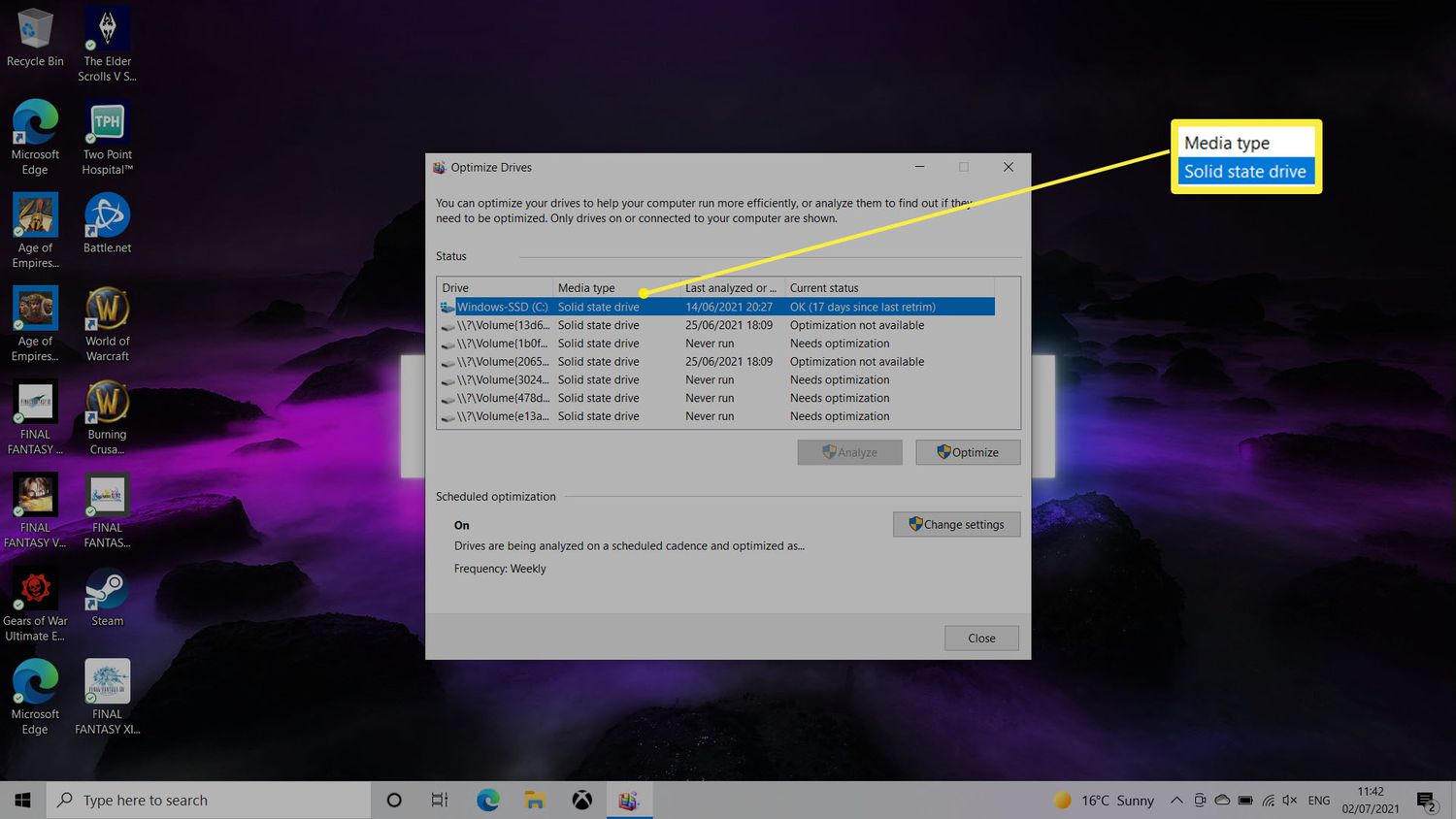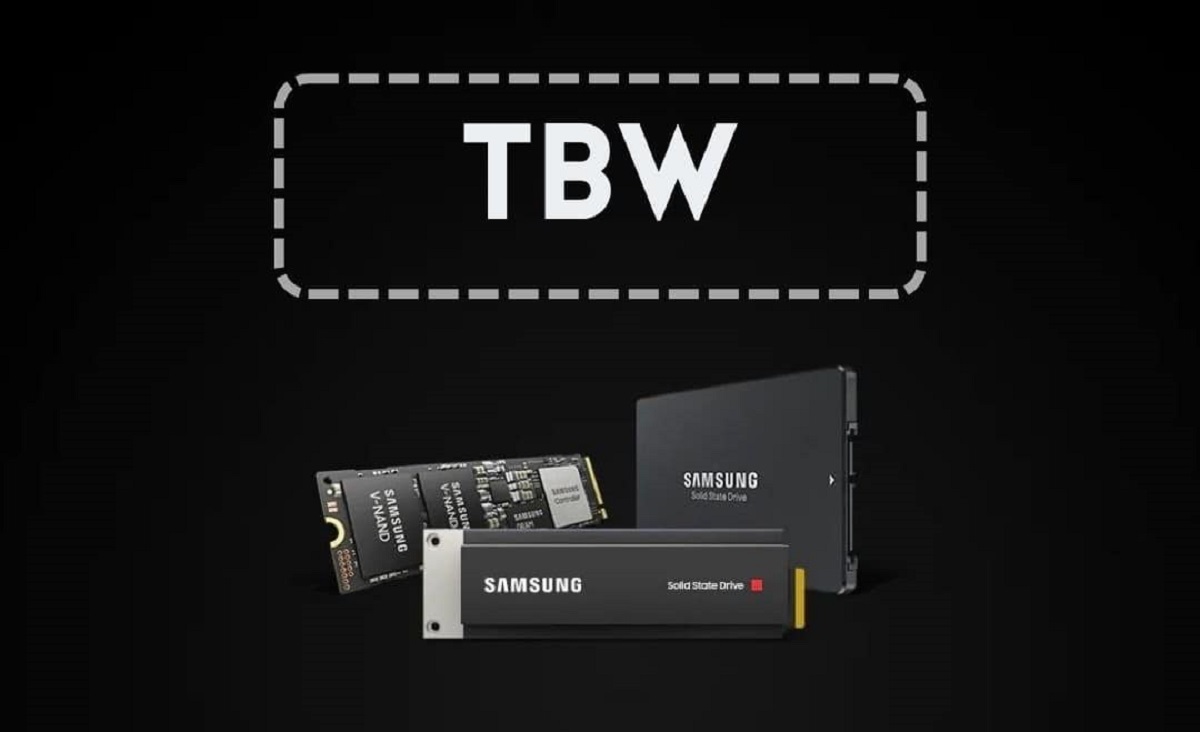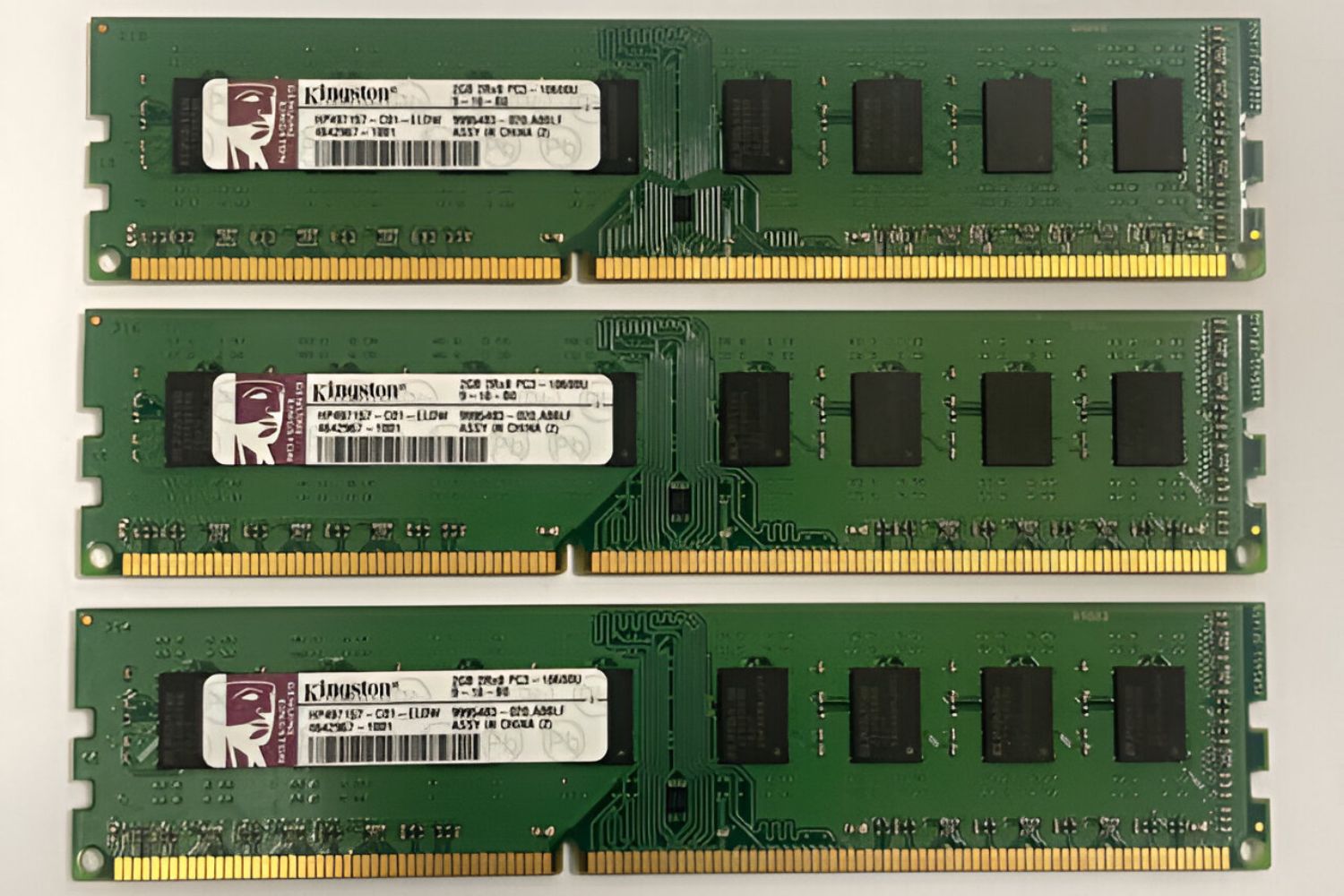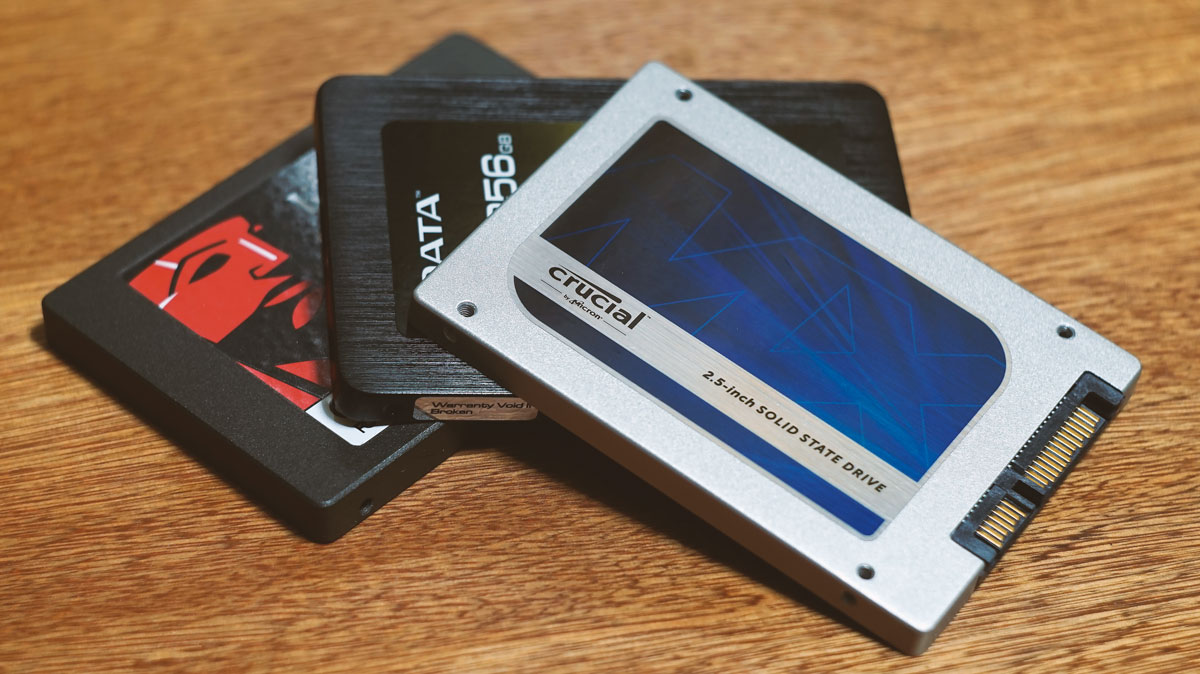What is a Solid State Drive (SSD)?
A Solid State Drive (SSD) is a type of storage device that uses semiconductor memory to store data. Unlike traditional hard disk drives (HDDs) that use spinning mechanical disks, SSDs have no moving parts. Instead, they rely on flash memory technology to store and retrieve data quickly and efficiently.
Inside an SSD, there are numerous memory chips that store data in a non-volatile manner, meaning the data remains even when power is disconnected. This allows for faster access to data since there is no need for physical read/write heads to move across spinning disks, as is the case with HDDs.
SSDs are known for their incredible speed and performance. They provide much faster read and write speeds compared to HDDs, which can significantly enhance the overall performance of a computer system. This is particularly noticeable in tasks that involve accessing large files, launching applications, or booting up the operating system.
Another advantage of SSDs is their durability and reliability. Since there are no moving parts, SSDs are more resistant to shock, vibration, and mechanical failure, making them ideal for portable devices like laptops. Additionally, SSDs consume less power, generate minimal heat, and produce less noise compared to HDDs.
Over the years, SSDs have become increasingly popular due to their significant advantages over traditional HDDs. They are widely used in various technological devices, including laptops, desktop computers, servers, gaming consoles, and even smartphones.
In the next sections, we will explore different methods to determine whether your computer has an SSD installed or if it is using a traditional HDD. By using these methods, you will be able to identify the type of storage device in your computer and take advantage of the benefits offered by SSDs.
How does a Solid State Drive work?
A Solid State Drive (SSD) works by using a technology called NAND flash memory. Unlike traditional hard disk drives (HDDs) that rely on spinning mechanical disks, SSDs store data in a grid of memory cells. Each cell can hold multiple bits of information, allowing for higher storage densities.
When data is written to an SSD, electrical charges are stored in the cells, marking them as either a 0 or a 1. These charges can be applied or removed using a process called “program” and “erase.” This ability to change the state of the cells is what makes SSDs non-volatile, meaning the data remains even when the power is turned off.
To retrieve data from an SSD, the controller reads the charges stored in the memory cells. By applying voltage to specific cells, the controller can determine their charges and convert them back into binary data. This process allows for fast and efficient access to the stored information.
Furthermore, SSDs have a wear-leveling mechanism in place to distribute data evenly across the memory cells. Since flash memory cells have a limited number of write cycles, the wear-leveling algorithm ensures that all cells are used evenly, prolonging the lifespan of the SSD.
SSDs also feature a caching system to optimize performance. This involves reserving a portion of the SSD’s memory as a cache for frequently accessed data. By storing this data in a faster-to-access part of the drive, it can be retrieved more quickly, enhancing overall performance.
Overall, the lack of moving parts in an SSD allows for faster data access and transfer speeds, as there is no need to wait for mechanical components to move into position. This results in quicker boot times, faster application launches, and improved overall system responsiveness.
Now that you have a basic understanding of how SSDs work, let’s proceed to the next sections to learn how to check if your computer is equipped with an SSD or a traditional HDD.
Benefits of using a Solid State Drive
There are several advantages to using a Solid State Drive (SSD) over a traditional hard disk drive (HDD). Here are some key benefits:
- Increased Speed: One of the significant advantages of an SSD is its speed. SSDs have faster read and write speeds compared to HDDs, resulting in quicker data access and transfer. This means faster boot times, shorter application load times, and improved overall system responsiveness.
- Better Performance: Due to their high-speed nature, SSDs can greatly enhance the performance of your computer. With faster data access, tasks that involve accessing large files, running demanding applications, or multitasking become smoother and more efficient.
- Durability and Reliability: SSDs have no moving parts, making them more resistant to shock, vibration, and mechanical failure. This makes them ideal for portable devices like laptops, as they can withstand accidental drops and bumps without risking data loss or hardware damage.
- Power Efficiency: SSDs consume less power compared to HDDs. This is because they do not require energy to spin disks or move mechanical components. As a result, SSDs can extend battery life in laptops and contribute to energy savings in desktop computers.
- Silent Operation: Since SSDs lack moving parts, they produce no noise during operation. This creates a quieter computing environment, particularly for tasks that require minimal fan noise or for users who prefer a silent working or gaming experience.
In addition to these benefits, SSDs also offer improved file management, quicker file copying and transferring speeds, and better resistance to data fragmentation. All these advantages combine to provide a noticeable boost in overall system performance and user experience.
It’s important to note that while SSDs offer numerous benefits, they may come at a higher cost per gigabyte compared to HDDs. However, with the decreasing prices of SSDs over time, they have become more affordable and are now commonly used in various devices, including laptops, desktop computers, and gaming consoles.
Now that we’ve explored the benefits of using an SSD, let’s delve into the methods you can use to determine if your computer is equipped with an SSD or an HDD.
How to check if you have a Solid State Drive
If you’re unsure whether your computer has a Solid State Drive (SSD) or a traditional hard disk drive (HDD), there are several methods you can use to find out. Here are four effective ways to determine the type of storage device in your computer:
Method 1: Check your computer’s specifications
One of the simplest ways to determine if your computer has an SSD is by checking its specifications. You can usually find this information in the system settings or the documentation that came with your computer. Look for terms like “Solid State Drive,” “SSD,” or “Flash Storage” to confirm the presence of an SSD.
Method 2: Observe the startup time and speed
An SSD typically provides faster boot-up times compared to an HDD. If your computer takes just a few seconds to start up and become fully operational, it’s likely equipped with an SSD. Similarly, if you notice a significant improvement in the speed of file transfers and application launches, it’s a good indication that you’re using an SSD.
Method 3: Check the physical appearance of your storage device
If you’re comfortable opening your computer’s case, you can visually inspect the storage device. SSDs are typically smaller and slimmer in size compared to HDDs. They have no moving parts and are often a rectangular or square-shaped board with electronic components. In contrast, HDDs are larger, have spinning disks inside, and usually connected with cables.
Method 4: Use software to identify your drive type
There are various software tools available that can provide information about your computer’s storage device. Programs like CrystalDiskInfo, Speccy, or HWiNFO can detect and display details about your storage device, including the type (SSD or HDD), capacity, and health status. Download and install one of these tools, then run it to identify your drive type.
By using these methods, you can determine if your computer is equipped with an SSD or an HDD. Knowing the type of storage device in your computer is essential for understanding its capabilities and taking advantage of the benefits offered by SSDs.
Method 1: Check your computer’s specifications
One of the simplest and most straightforward methods to determine if your computer has a Solid State Drive (SSD) is by checking its specifications. By accessing the system settings or referring to the documentation that came with your computer, you can find relevant information about the storage device.
Here’s how you can check your computer’s specifications:
- Open the Start menu and type “System Information” in the search bar. Click on the corresponding result to open the System Information window.
- In the System Information window, you will find various details about your computer’s hardware and software. Look for the section labeled “Storage” or “Drives.”
- Under the Storage or Drives section, you should see a list of the storage devices installed in your computer. Look for terms such as “Solid State Drive” or “SSD.”
- If you find the term “Solid State Drive” or “SSD” mentioned next to one of the storage devices, then your computer is equipped with an SSD. It confirms that you have the benefits of faster data access, improved system performance, and enhanced durability.
Alternatively, if you have the documentation that came with your computer, you can refer to it for information about the storage device. Look for specifications related to the hard drive or storage and check if it mentions an SSD.
In case you are unable to find the specific information about your storage device in the system settings or documentation, you can search for the model number of your computer online. Visit the manufacturer’s website or check reputable technology review websites. The product specifications should indicate whether it has an SSD or an HDD.
By checking your computer’s specifications, you can easily determine if it is equipped with a Solid State Drive (SSD). This method provides a reliable and definitive way to confirm the presence of an SSD in your computer.
Method 2: Observe the startup time and speed
Another effective method to determine if your computer has a Solid State Drive (SSD) is by observing the startup time and overall speed of your system. SSDs are known for their fast boot times and improved performance, so comparing the speed of your computer to typical SSD performance can give you a clue.
Here’s how you can check by observing the startup time and speed:
- Start your computer and take note of how long it takes to fully boot up and become operational. An SSD-equipped system will typically boot up much faster compared to a traditional hard disk drive (HDD).
- If your computer boots up in just a few seconds and reaches the desktop or login screen quickly, it is a strong indication that your system is using an SSD. The absence of spinning disks and mechanical parts in an SSD allows for faster data access and retrieval, resulting in quicker startup times.
- Pay attention to the speed of file transfers and application launches. SSDs excel in these areas, offering significantly improved performance compared to HDDs. If you notice that copying or moving files happens swiftly or applications load almost instantly, it’s likely that you have an SSD.
- Consider the overall responsiveness of your system. If you experience smooth multitasking, minimal lag when switching between applications, and a generally snappy user interface, it further suggests the presence of an SSD.
It’s worth noting that while an SSD significantly enhances speed and performance, other factors such as the processor and amount of RAM also influence overall system performance. However, if your computer shows remarkable speed in booting up and performing tasks, it’s highly probable that it has an SSD.
Observing the startup time and speed of your computer provides a practical way to assess if you have an SSD. The fast boot times and improved performance characteristic of SSDs can offer a clear indication of the type of storage device in your computer.
Method 3: Check the physical appearance of your storage device
If you’re comfortable opening your computer’s case, you can visually inspect the physical appearance of your storage device to determine if it is a Solid State Drive (SSD) or a traditional hard disk drive (HDD). SSDs and HDDs have distinct characteristics that make them easy to differentiate.
Follow these steps to check the physical appearance of your storage device:
- Power off your computer and unplug it from the power source. Ensure that you also disconnect any external devices.
- Carefully open the computer’s case. Refer to the manufacturer’s documentation or search online for instructions specific to your computer model, as the process may vary.
- Locate the storage device inside your computer. It is usually connected to the motherboard via a SATA or M.2 connector.
- Observe the physical appearance of the storage device. SSDs are typically smaller and slimmer compared to HDDs. They do not have any moving parts. Instead, they consist of a rectangular or square-shaped circuit board with electronic components on it.
- If the storage device in your computer matches the description of an SSD – small, slim, and with no moving parts – it confirms that your computer has an SSD. Conversely, if the storage device is larger, has spinning disks inside, and is connected by cables, it is likely an HDD.
It’s essential to exercise caution when opening your computer’s case to avoid damaging any components. If you’re not comfortable performing this process yourself, you can seek assistance from a knowledgeable professional or refer to the manufacturer’s service center.
By visually inspecting the physical appearance of your storage device, you can determine if your computer uses an SSD or an HDD. This method provides a direct and reliable way to identify the type of storage device present in your computer.
Method 4: Use software to identify your drive type
If you’re unable to determine the type of storage device in your computer using the previous methods, you can use software tools to help identify whether it is a Solid State Drive (SSD) or a traditional hard disk drive (HDD). Various software utilities are available that can provide detailed information about your computer’s storage devices.
- One popular software tool you can use is CrystalDiskInfo. It is a free application that displays information about the storage devices connected to your computer. Download and install CrystalDiskInfo from a reputable source.
- Once installed, run CrystalDiskInfo. The application will display a list of drives connected to your computer, along with their respective details like name, health status, capacity, and type.
- In the type column, SSDs are commonly labeled as “Solid State Drive,” “SSD,” or “Flash Memory.” On the other hand, HDDs are typically identified as “Hard Disk Drive” or “HDD.”
- You can also use other software tools like Speccy or HWiNFO to identify your drive type. These programs provide detailed information about your computer’s hardware, including the storage devices.
- Download and install the preferred software tool, then run it on your computer. Look for the section related to the storage devices or hard drives and review the information provided. Look out for terms like “Solid State Drive,” “SSD,” or “Flash Storage,” as they indicate the presence of an SSD.
By utilizing software tools like CrystalDiskInfo, Speccy, or HWiNFO, you can obtain comprehensive information about your computer’s storage device and confirm whether it is an SSD or an HDD. These tools are easy to use and reliable in providing accurate details about your drive type.
Note that when using any third-party software, always download it from trusted sources to ensure that you are using legitimate and safe applications.
By employing software tools to identify your drive type, you can efficiently determine if your computer is equipped with an SSD or an HDD. This method offers a convenient and reliable way to gather accurate information about your storage device.
Conclusion
Identifying whether your computer has a Solid State Drive (SSD) or a traditional hard disk drive (HDD) is vital for understanding its capabilities and taking advantage of the benefits offered by SSDs. In this article, we explored four methods to help you determine the type of storage device in your computer.
We started by checking the computer’s specifications, either through system settings or documentation, to see if it mentions an SSD. This method provides a straightforward way to confirm the presence of an SSD.
We then discussed how observing the startup time and overall speed of your computer can offer insights into the type of storage device. Fast boot times, quick file transfers, and snappy application launches are characteristic of an SSD.
The physical appearance of the storage device was another method we explored. By opening the computer’s case and visually inspecting the storage device, we can differentiate between the slim, no-moving-parts design of an SSD and the larger, spinning-disk construction of an HDD.
Lastly, we discussed using software tools like CrystalDiskInfo, Speccy, or HWiNFO to identify the drive type. These applications provide detailed information about the connected storage devices, including their types and specifications.
By using these methods, you can confidently determine if your computer is equipped with an SSD or an HDD. Knowing the type of storage device in your computer allows you to make informed decisions about your system’s performance, file management, and overall user experience.
Whether your computer has an SSD or an HDD, it’s essential to consider your storage needs and preferences when purchasing or upgrading your computer. SSDs offer faster speeds, improved durability, and power efficiency, making them an attractive choice for many users.
Keep in mind that technology is constantly evolving, and new storage innovations may emerge in the future. Staying informed and regularly checking for updates and advancements ensures that you make the most of your computer’s storage capabilities.

























